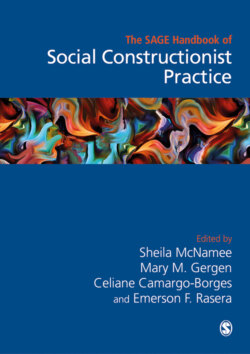Читать книгу The Sage Handbook of Social Constructionist Practice - Группа авторов - Страница 22
На сайте Литреса книга снята с продажи.
The Foibles of Fixity
ОглавлениеInnovations in professional practice are typically embraced because they represent improvements; they solve a pressing problem, are more effective, expand potential, and so on. And so it is with most of the practices explored within the present volume. However, when a new and desirable practice is found worthy, there is an accompanying tendency to lock it in place. This may be realized through extensive accounts in books and journals, and through operating principles, codifications, procedural rules, graphic summaries, and so on. One may see this tendency as only natural: ‘if a practice works, let's make sure we can repeat it’. The modernist worldview just discussed adds further weight: ‘If we can standardize it, we can install it in multiple locations, with a correspondingly high yield.’
Yet, this same penchant for a fixed procedure presents a danger to continuing innovation. On the most obvious level, and spurred by the neoliberal emphasis on economic gain, there are pervasive moves to monetize the practice. ‘How can we use the practice to make money?’ For practitioners, steps in this direction often include trademarking, developing training programs, and certification. There are several unfortunate results. The use of the practice becomes limited to only those who can afford the certified training. And, because they in turn will charge those who wish to make use of their services, the practice will ultimately be limited to the economically advantaged. In the service of expanding profits and/or control, the practice ceases to be transformative.
There is a more subtle problem at play in systematizing a successful practice, one that may be termed repetition regression. In general, any action – verbal or otherwise – shifts in significance as it is repeated. In the same way, any practice that is brimming with success when it is first employed, faces the problem of waning efficacy over time. The reasons are several. When a practice becomes a ritual it often loses excitement. Over time, boredom is invited. The first time one experiences an Appreciative Inquiry practice, for example, may be riveting. The tenth time, one may even feel resistant. Further, in many contexts the importance of a practitioner's words depends on their authenticity, that is, whether the expressions are specifically relevant to the unique individual or conditions at hand. When a teacher praises a student, for example, or a therapist expresses regard for a client, much depends on whether the praise or regard are seen as programmed – what the teacher or therapist always says – as opposed to being specific to the individual or situation in question. Finally, when a practice becomes formalized, it also becomes open to instrumentalization. It becomes a tactical tool for changing others, and thus subject to the same pitfalls discussed above regarding the presumption of causality.
It is essential, then, to avoid memorializing favored practices, and to embrace the possibilities of hybridization and continuous reforming.
